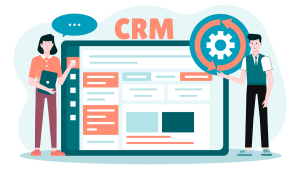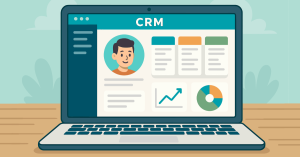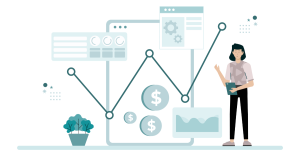The purpose of a marketing automation system is to generate and feed as many qualified leads to your sales team as possible. But a marketer’s job doesn’t end there. If you’re not mining the sales data being generated by those leads, then you risk leaving additional sales opportunities on the table.
To truly benefit from the effort and expense of your marketing efforts, you need to leverage the sales data already available to you in your CRM system. Whether you use Salesforce, Microsoft Dynamics or any number of other CRM systems, knowing what you need to look at to really understand who your customers are and what they want can go a long way towards building out additional effective marketing campaigns.
Let’s take a look at a few ways marketers can capitalize on their CRM data to reap the benefits:
The Ultimate Strategy Guide to Microsoft Dynamics and Marketing Automation
Learn how to integrate dynamics with your email, social, & more
Marketing to Your Existing CRM Contacts
One of the quickest ways to prove the value of your marketing automation platform and CRM system integration is to market to the contacts you already have in your CRM—your customers. Once a purchase has been made, you can use your CRM data and marketing automation platform to build out additional campaigns targeting these customers for special offers. Such campaigns can include “you might also like…” cross-sell campaigns or upselling campaigns that entice customers with upgrades or service add-ons.
What you don’t want to do, however, is hammer your customer base with random emails pushing every product or service you sell. Use your CRM sales data to search buying trends—are there related products or services people tend to buy together, for example? Then connect your buying insight with your lead scoring models. From there, you can create campaigns based on what people have already purchased and what they are likely to purchase in the future (based on their current purchasing habits) and how engaged they are with your messages today. You can then feed this information into your marketing automation platform to generate timely campaigns that target the most likely buyers of additional products or services.
You can also use your CRM system to identify past customers who might be prime for re-engagement. This takes knowing first how long it typically takes before a customer is ready to buy from you again, and bonus points if you know to whom you lost them. If you know how long your customers generally wait before buying a product again, you can deliver exclusive offers based on that specific timeline (for example 30, 60, or 90 days after last purchase). Your marketing automation platform (like the emfluence Marketing Platform!) can then be set to trigger offers based on this timeline criteria, re-engaging with them at just the right time.
Using your CRM to customize your marketing messages
Your leads and your contacts want to be treated like individuals, not line items of data. According to a study conducted by Infosys, 86% of consumers now claim that personalization plays an important role when it comes to deciding on a purchase. The good news is you can use your CRM system to power these customized campaigns.
When talking to leads or sales prospects, you can use your CRM data to customize a wide range of fields in your marketing automation platform. Beyond simply addressing your customers by name (which you should, of course, be doing), you can incorporate all of the data you’ve collected on their buying habits and preferences to tailor additional marketing campaigns that show you know them as individuals. Move beyond just first name and company—what other snippets of data can you use in a marketing campaign? Consider powering campaigns by:
- Region
- Industry
- Job Title
- Competitor
And any other snippet of data your sales team is already gathering in your CRM system. Not only will your sales increase, but the way your customers perceive you will improve as well.
Lookalike Audiences: Connecting CRM to Marketing Automation to Social Media
If you’re using your CRM system properly—whether that’s Microsoft Dynamics, Salesforce, or another CRM platform—then you should already know who your top customers are. The trick is finding more like them.
The good news is you can by creating your own “lookalike audience” in your social media platform of choice. Simply put, a lookalike audience is a demographic group that resembles, in a variety of customizable ways, another demographic group. So by knowing your customers inside and out through careful analysis of your CRM sales data, you can look for new customers with similar habits and preferences, and then follow up on your outbound efforts with a lead nurture from your marketing automation platform.
This tactic is especially effective on social media platforms, as many offer lookalike audience lists to lists you upload. Once you’ve populated these lists based on data from your CRM system, you can target them with relevant social ads and follow up using your marketing automation platform for emails, and other communications to potential customers who best resemble your best buyers. And depending on the size of your business, you can build out the campaigns to best suit your needs, modifying the size and look of these audiences to accommodate your specific needs and sales goals.
Connecting your CRM to your marketing automation platform
Connecting your CRM environment to your marketing automation platform can open up a world of marketing opportunity, but it can be tricky to figure out where to start once your integration is complete. Learn what we recommend here, and be sure to see how our platform connects to Salesforce and Microsoft Dynamics here.


